Prince of Persia: The Lost Crown Review | Persian Legends
Prince of Persia is finally back!
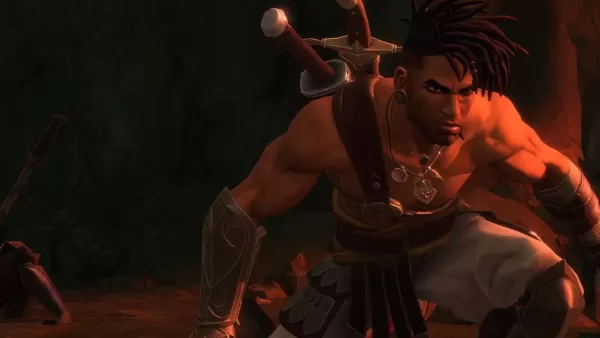
Prince of Persia, one of the earliest Ubisoft franchises that helped the studio gain critical acclaim has since remained dormant since 2010’s The Forgotten Sands. With troubling news about the Sands of Time Remake having to be rebooted once again, I didn’t have any high hopes for this one, especially since it’s narratively, thematically, and systematically different from what the franchise has been for most of us. However, from promising first impressions the game has been getting leading up to the release, it is safe to say that any worries on my end disappeared. I believe this to be a pleasant surprise and an exciting show of ingenuity for Ubisoft. Something I don’t find myself saying a lot with most of their modern AAA releases. This is my Prince of Persia: The Lost Crown review.
What was predominantly a 3D action game franchise with a strong focus on puzzles and parkour is now going back to its original bones as a 2.5D platformer. Just to add a cherry on top, you don’t even play as the Prince himself. The Lost Crown follows Sargon, one of the members of a powerful group of warriors who call themselves the Immortals. You are then tasked to travel to Mount Qaf to find the kidnapped prince.
With its Metroidvania style, the game thrives on mystery and ambiguity in both its narrative and mechanics. The story takes some very interesting turns which also translates well into the gameplay loop. For that reason, I won’t be saying much. The Lost Crown is best experienced knowing as little as possible. While it does take some time to pick things up and become more interesting, the systems that hold it together makes the entire thing a fantastic ride. I expected nothing less from Ubisoft Montpellier, developers of the Rayman franchise.
Vibrantvania
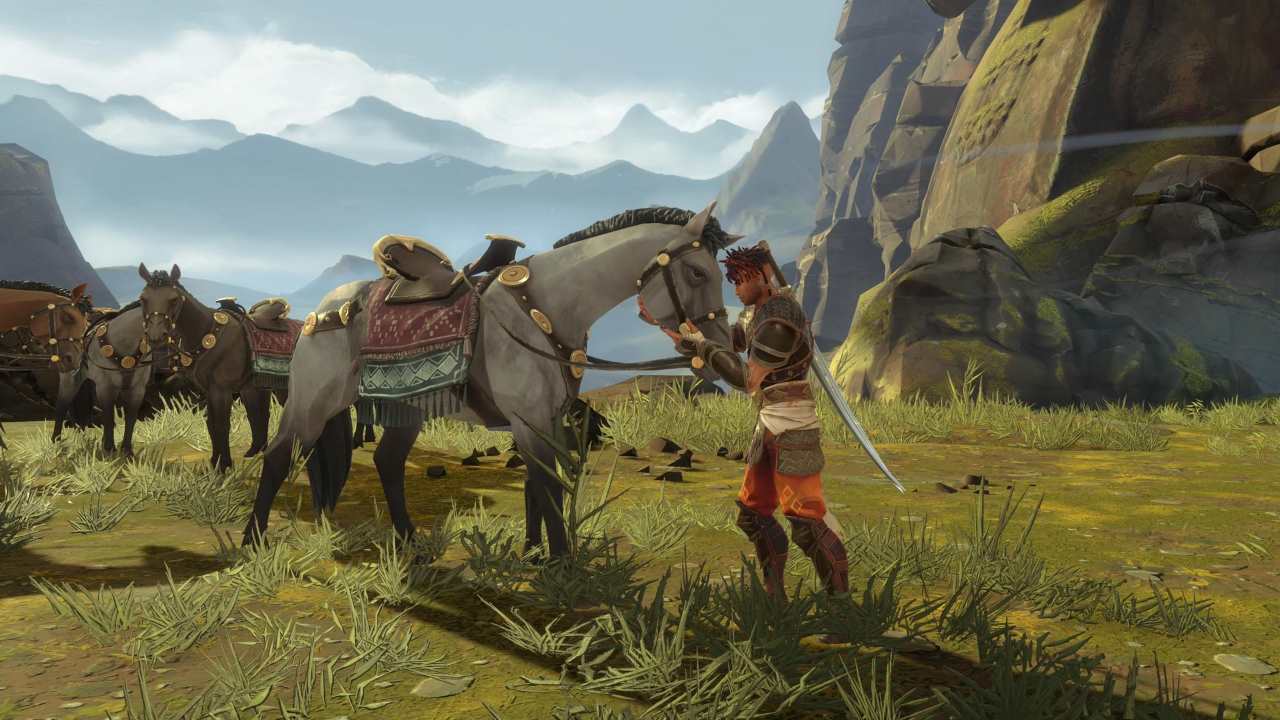
A very strong component of the game is in its presentation. The art direction is filled with vibrant colors that elevate the various environments you’ll be exploring. The Prince of Persia games that I used to play were filled with dark halls, dungeons, and a collective sense of dread and despair. The Lost Crown is a stark contrast to all of that. The stylized cutscenes and the regular gameplay loop are an aesthetic feast for the eyes.
The world design of Mount Qaf and the characters you meet along the way breathe so much more life than anything else the franchise has had. There’s always something to look forward to at every corner, thanks in large part to the level design.
One of the biggest signs I use to determine whether or not a platformer is made with care and attention is if it contains unfair disadvantages. There are times when there are obstacles that are positioned out of frame wherein the player has little to no opportunity to react accordingly. The Lost Crown doesn’t have any of that. Everything relevant to the moment-t0-moment gameplay at any given moment is presented in clear view of the camera. A small and easily missable aspect of the genre but one that speaks so much to the quality of the craft.
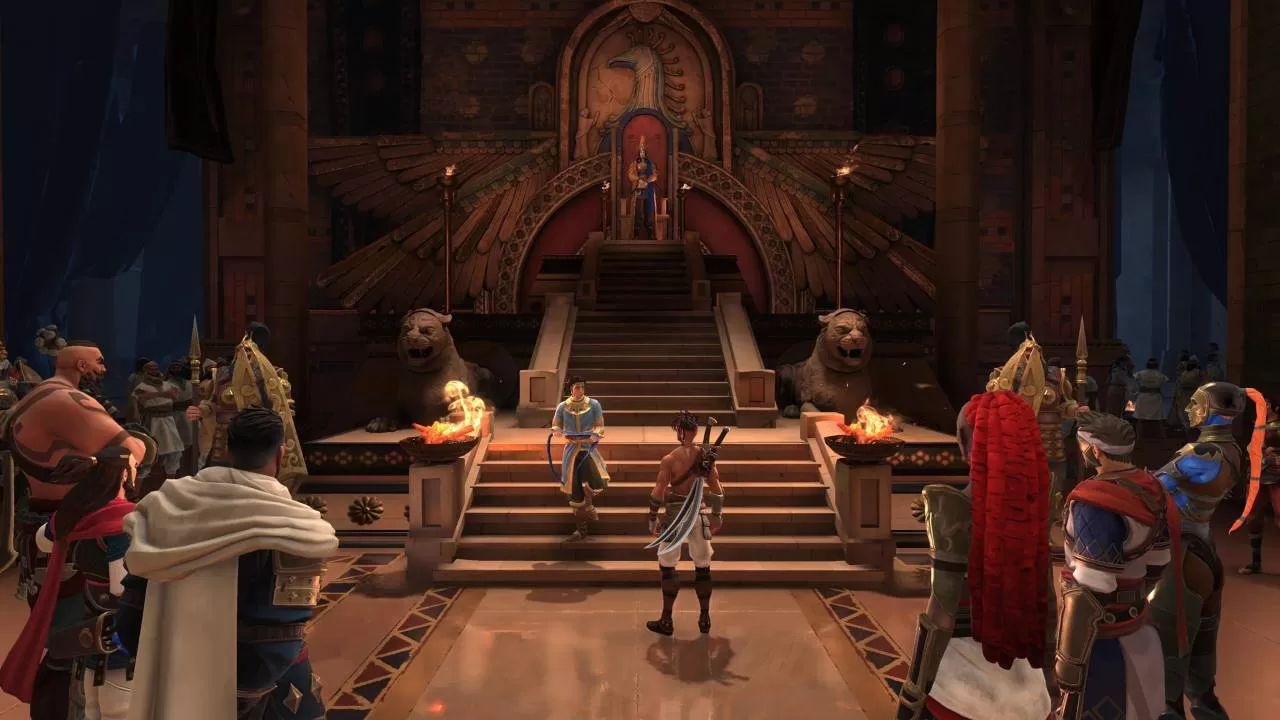
In the first few hours of the game, the platforming is less based on momentum and reflexes but more on precision. Jump timings, spacing, and discovering gaps are a priority. Slowly but surely, you’re gaining good muscle memory on how to move about the world at a fundamental level. As you progress through the game, Sargon gains new abilities and equipment that help you in both traversal and combat. This then opens up so much more possibilities in terms of accessing places you couldn’t before or pulling off moves that you initially wish you could. There is an excellent sense of mechanical improvement sprinkled throughout.
The Lost Crown features one interconnected world to explore. There are various NPCs, members of the Immortals, and shopkeepers you’ll meet along the way. Each one has a distinct personality of their own and is wonderfully realized by their respective voice actors. You’ll spend a lot of time gathering resources to afford upgrades. But, it’s not the typical Ubisoft open-world grinding that sends chills down your spine. It’s all well-paced and balanced. Admittedly, it was a bit tedious to move around in the first few hours since you can’t fast-travel yet. But it’s definitely not Dragon’s Dogma running across an entire archipelago levels of bad.
The best offense is having a good sense
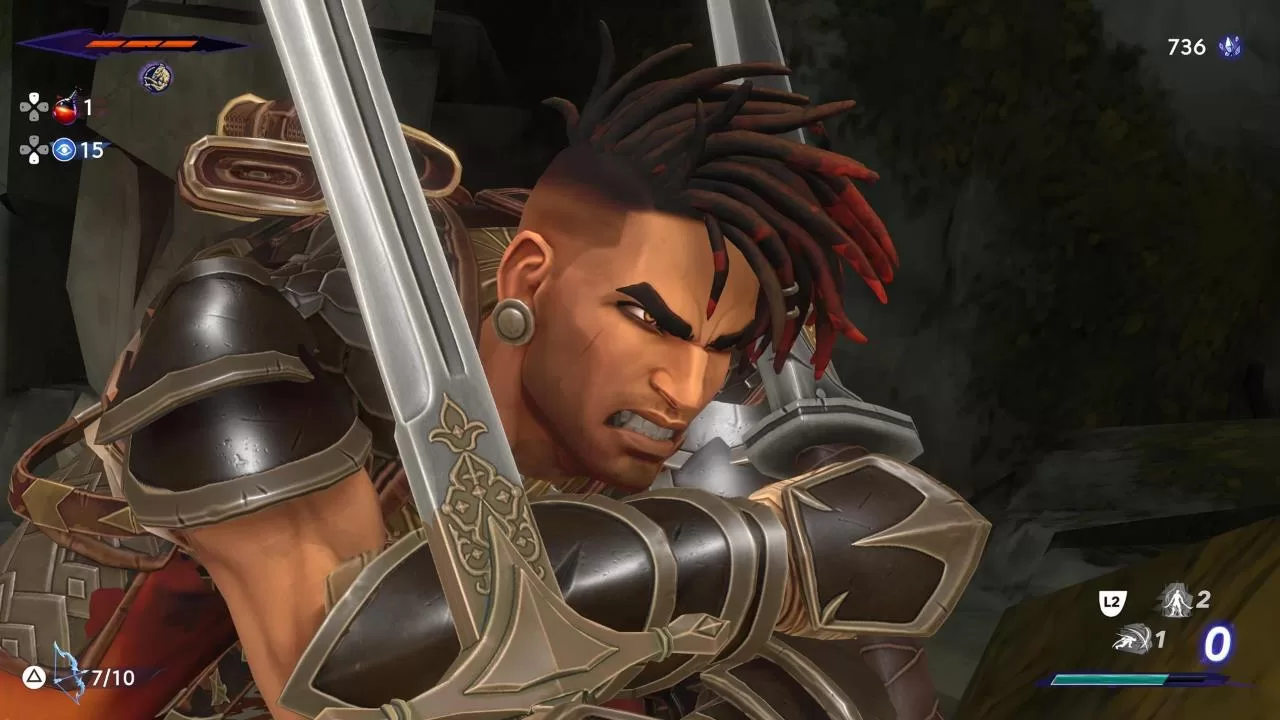
The Lost Crown’s combat is fantastic. It’s fast, fluid, and impressively animated. It all looks and sounds amazing in motion. You’ll be combining basic attacks with traversal mechanics and the extra tools you find along the way. One thing I loved was how much it doesn’t rely on defense, because there’s practically none of it. The game constantly encourages you to push forward. You either outsmack or outsmart the enemy. There is a great sense of momentum in each encounter.
You can either dodge or parry attacks. Both don’t always work with every attack but each one serves a strategic purpose in every given situation. What I find most impressive about the combat is how cinematic it all feels. Athra Surges, which are very powerful special moves you have to charge up, are always so satisfying to execute. The camera frames the action so well, especially during the highly satisfying executions you’ll do when pulling off a special parry, that combat spectacle never got stale.
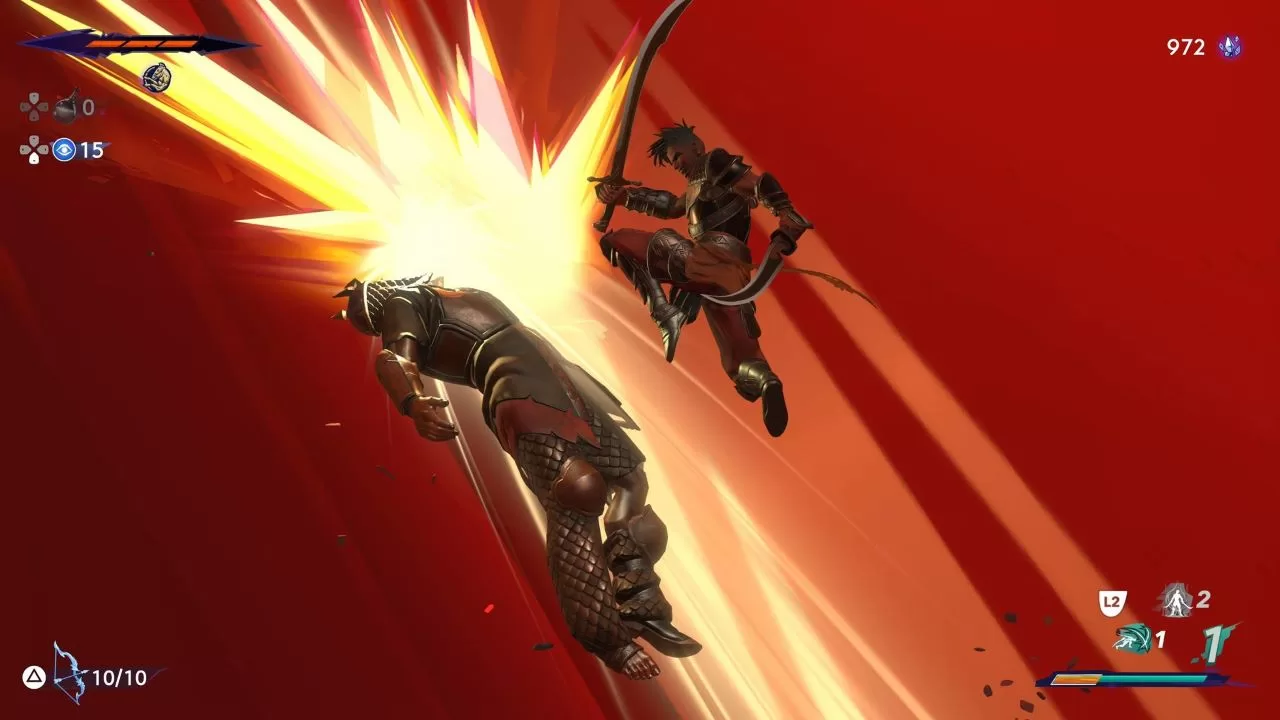
Enemy variety is strong with different tactics required to effectively take down each one. The boss fights are also a definitive highlight in the way they’re designed. Character models are detailed, animations are impactful, and attacks feel significant. Learning patterns and understanding opponents is what makes the combat feel so great to master.
You’ll be getting various amulets from side quests, exploration, or shops that provide various buffs to Sargon. They do provide a welcome helping hand because the game’s difficulty is certainly not something to breeze by. But none are overpowered gamechangers which I appreciate. At the end of the day, your mastery of the different mechanics is still the best for success. Unfortunately, a lot of the latter amulets feel useless or barely functional. Once you find a core set, fairly early on in the game, you don’t have any need or reason to switch.
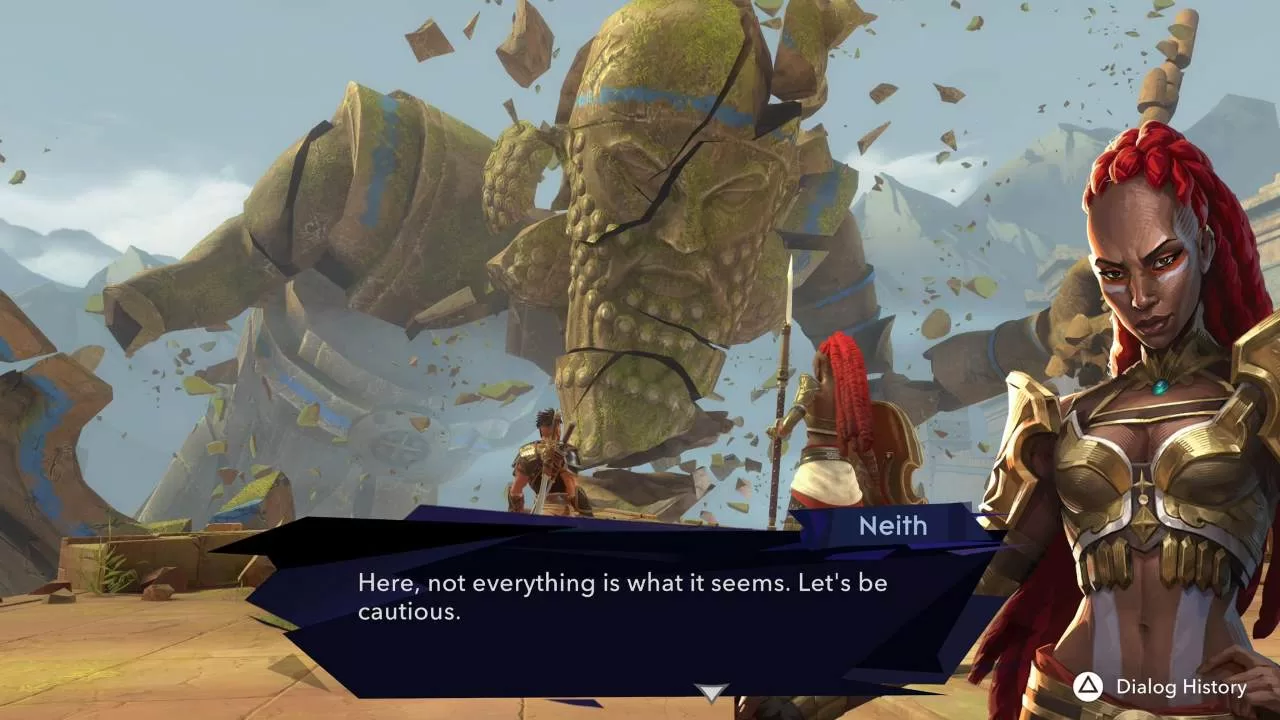
There is a bit of a soulslike element to this where checkpoints are marked by Wak-Wak trees instead of bonfires. Here, you can replenish health, change amulets, and pick which Athra Surges to equip. You’ll know when you’re near one since the game does the Elden Ring thing where a faint golden line is pointing towards its general direction. Nevertheless, the Wak-Wak trees are sprinkled around the world in a way that doesn’t feel too little or too much. Just the perfect amount to make each one feel properly earned.
Prince of Persia: The Lost Crown Review Final Verdict – 9/10
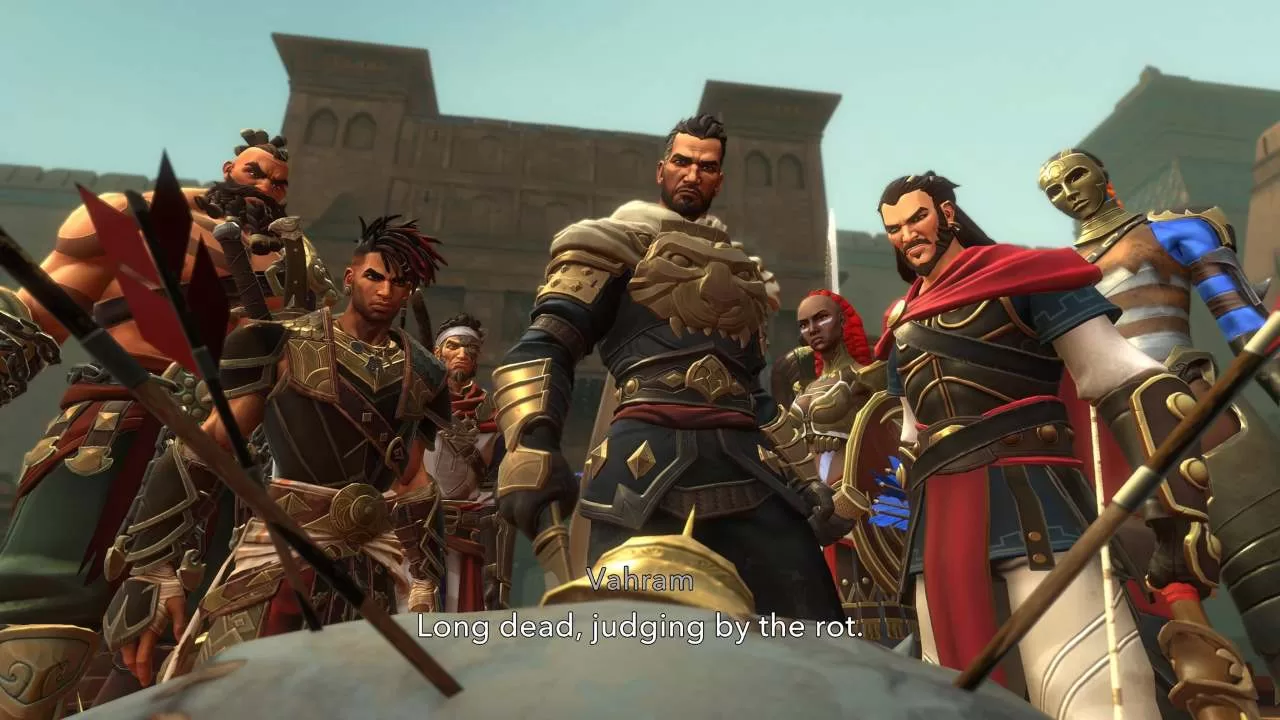
Everything about this game makes me so happy because it’s a lot of things that people have been wishing for Ubisoft. While it’s no secret that I still adore their recent AAA titles such as Assassin’s Creed Mirage and Avatar: Frontiers of Pandora, the studio has had a reputation for being too scared to think outside the comfortable box they built themselves into. The Lost Crown is a great sign that creative expression still exists among the developers.
This is a far cry from the usual overly bloated open-world experiences the studio makes. It’s a tightly designed 20-25 hours experience that features no sign of predatory monetization and artificial gameplay extenders. If there’s anything that Ubisoft and the rest of the industry should take away from The Lost Crown is that they should never be afraid to explore a completely new direction and vision as long as there is a clear intent to make it as best as they can.
This review was made using a PS5 code provided by the publisher.

